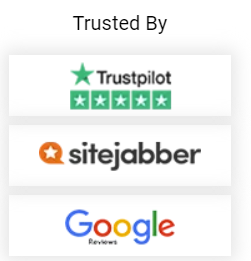Direct voice can take both official and informal forms. Informal employee voice involves daily feedback and discussions, while formal employee voice includes structured grievance systems and surveys provided by the employer. These channels enhance organisational performance and employee outcomes (Gifford, 2018). When it comes to high-performance work practices (HPWP), direct voice is essential for driving engagement and participation. Research indicates that these approaches are often part of a strategy focused on delivering high-quality products and services while nurturing highly motivated employees (Burris et al., 2017).
Formal methods of employee voice encompass team briefings, problem-solving groups, opinion surveys, and various engagement initiatives. In contrast, conversations between line managers and employees tend to have a more casual tone. Trust and open communication between management and staff are vital for a company’s success (Kauffeld & Lehmann-Willenbrock, 2012). By involving employees in decision-making processes, these participatory methods cultivate a workplace culture where workers feel valued and respected, ultimately leading to improved morale and productivity.
Effective team meetings are advantageous for both teams and organisations. Grasping the minute-by-minute dynamics of team engagement is essential for boosting productivity. Meetings provide a platform for employees to collaborate, share ideas, and learn from one another (Kauffeld & Lehmann-Willenbrock, 2012). When team members express themselves freely, they gain confidence knowing their opinions are valued. These gatherings foster trust, which is crucial for productivity and overall success. Facilitating open dialogue helps businesses maintain strong working relationships. In a positive and welcoming culture, everyone flourishes, contributing to the organisation’s achievement (Lai & Johnstone, 2017). When team members feel their voices are heard, they are more committed to their work, leading to increased effort not just for themselves but for the company as a whole. Employees who sense a sense of belonging are more invested in what they do, resulting in greater enthusiasm and a willingness to go the extra mile, ultimately benefiting the company’s bottom line (CIPD, 2019).
Moreover, problem-solving groups serve as an excellent way for employees and management to team up in tackling shared concerns. These environments nurture creative problem-solving and innovative thinking (Morrison, 2014). When managers have access to relevant team-related information, they make better decisions and address challenges more effectively. Employees who feel recognised and included in problem-solving initiatives tend to be more productive and engaged with the organisation (Morrison, 2014). Employee attitude surveys are a common tool in non-unionised settings for giving workers a voice. By addressing work-related issues, these surveys actively involve employees in decisions that impact them. They highlight preferences, flag potential concerns, identify root causes of issues, and compare satisfaction, commitment, and morale across departments (Marchington & Suter, 2013). Consequently, conducting regular staff attitude surveys can act as early warning systems, enabling management to address issues proactively and reducing the risk of employee turnover. These surveys can be conducted through interviews, questionnaires, or focus groups, sometimes combining these methods for optimal insight (Morrison, 2014). When businesses and employees collaborate to identify challenges, it becomes easier to find practical solutions before problems escalate. By addressing issues like high employee turnover early on, companies can improve retention rates, maintain high morale, and enjoy the benefits of enhanced employee efficiency and productivity.
Line manager-employee conversations provide a crucial outlet for employees to share their thoughts. These discussions can take place during coffee breaks, at company events like holiday parties, or through interviews and questionnaires (Marchington & Suter, 2013). Line managers play a key role in implementing HR practices that encourage employees to voice their concerns and ideas. Such formal and informal methods can yield numerous benefits, enhancing employee learning, motivation, and well-being, as well as overall working conditions and organisational productivity (Pohler & Luchak, 2014).




